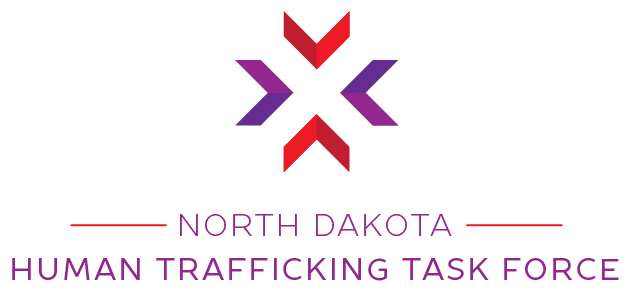Human trafficking is a crime involving the exploitation of someone for the purposes of compelled labor or a commercial sex act through the use of force, fraud, or coercion. Human trafficking affects individuals across the world, including here in the United States, and is commonly regarded as one of the most pressing human rights issues of our time. Human trafficking affects every community in the United States across age, gender, ethnicity, and socio-economic backgrounds.
Forms of Trafficking
Sex trafficking is the recruitment, harboring, transportation, provision, obtaining, patronizing, or soliciting of a person for the purposes of a commercial sex act, in which the commercial sex act is induced by force, fraud, or coercion, or in which the person induced to perform such an act has not attained 18 years of age (22 USC § 7102).
Labor trafficking is the recruitment, harboring, transportation, provision, or obtaining of a person for labor or services, through the use of force, fraud, or coercion for the purposes of subjection to involuntary servitude, peonage, debt bondage, or slavery, (22 USC § 7102).
Recruitment Methods
Violence or threats against their lives and/or loved ones’ lives
False job advertisements
Manipulative/coercive relationships
False promises
Familial trafficking
Debt bondage
Promise of better life in another country
Social media
Blackmail
Businesses or Services that Traffickers Commonly Utilize to Traffic Individuals
Advertising (Online and Print)
Airlines, bus, rail, and taxi companies
Financial institutions, money transfer services, and informal cash transfer services
Hospitality industry, including hotels and motels
Labor brokers, recruitment agencies, or independent recruiters
Landlords
Travel and visa/passport services
Examples of Traffickers
Brothels and fake massage business owners and managers
Parents and relatives of victims
Spouses or partners of victims
Employers of domestic servants
Bar/lounge owners and managers
Gangs and criminal networks
Growers and crew leaders in agriculture
Labor brokers
Factory owners and corporations
Hospitality industry owners and managers
Pornography industry recruiters and managers
Small business owners and managers
Exploitation vs. Trafficking
Within trafficking is exploitation. The NDHTTF provides services to victims of both trafficking and exploitation, as they are treated separately under North Dakota law.
Exploitation is the exchange of a sex or labor act for money, shelter, drugs, or anything of value, between two parties. This includes survival sex, stripping, sextortion, pornography, and numerous fields of work.
A youth runs away from home or is kicked out of their home, and someone offers them a “safe” place to stay in exchange for a sexual act. That is survival sex.
An individual works for a business in exchange for shelter, which may be shared with other individuals.
A youth is coerced into sending a nude photo to someone via social media and that person blackmails the adult with that photo in exchange for additional photos. This is sextortion.
Trafficking is when the exploitation involves a third party. This third party is profiting from the sex or labor acts in some way (money, drugs, etc.) that is being performed by another person; the victim. This third party person who is profiting from the act is the trafficker.
Parents cannot afford rent and the landlord agrees to waive rent in exchange for a sexual act from the child. Those parents are now the traffickers.
A teen’s boy/girlfriend coerces them to have sex with their friends in exchange for money, drugs, a new cell phone, clothing, etc… That boy/girlfriend is their trafficker.
An employer forces an employee to work long hours for little/no pay, withholds payment stating that the employee owes money, and physically abuses and threatens life of employee. This is a form of labor trafficking.
Why Trafficking Exists
Human trafficking is a market-driven criminal industry that is based on the principles of supply and demand, like drugs or arms trafficking. Many factors make children and adults vulnerable to human trafficking. However, human trafficking does not exist solely because many people are vulnerable to exploitation. Instead, human trafficking is fueled by a demand for cheap labor, services, and for commercial sex. Human traffickers are those who employ force, fraud, or coercion to victimize others in their desire to profit from the existing demand. To ultimately solve the problem of human trafficking, it is essential to address these demand-driven factors, as well as to alter the overall market incentives of high-profit and low-risk that traffickers currently exploit.




